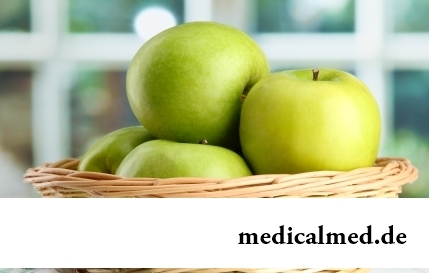





Belladonna
Application instruction:
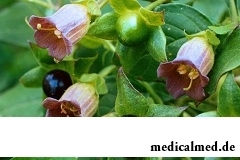 Belladonna – the noxious medicinal plant containing alkaloids of group of atropine.
Belladonna – the noxious medicinal plant containing alkaloids of group of atropine.
Chemical composition
The belladonna is the perennial herbaceous plant relating the Nightshade family to the sort Family Belladonna. It also call the Belladonna ordinary, Krasukhoy, the Sleepy stupor, Mad berry.
The belladonna is widespread in North Africa, Europe, Asia, and also in the Crimea and in the Caucasus. She prefers the thinned beech, oak, fir and death forests.
At a plant:
- The thick branchy stalks of green or dark-violet color reaching in height of two meters;
- Rhizomes with numerous large branchy roots;
- Shirokolantsetny, petiolar leaves of an oblong and ovoid form;
- Medium-sized, single, five-membered flowers of dirty-violet or yellow color.
The belladonna since the end of spring to the late fall blossoms. Fruits in the form of the brilliant black berries reminding medium-sized cherries begin to ripen at the end of July.
All parts of a belladonna are poisonous and contain alkaloids of group of atropine in different proportions. Most of all they in roots and leaves (1,2-1,3%) and to 1% contain in stalks, flowers and mature fruits. In addition to atropine hyoscine (Scopolaminum) and Hyoscyaminum also is a part of a belladonna. An elevated part of a plant contains oxycoumarins, flavonoids, ashes both some macro - and microelements: potassium, calcium, iron, magnesium, selenium.
As medicinal raw materials leaves, a grass and a root of a plant which generally collect from plantations are used, at the same time leaves prepare at the beginning of summer (in a blossoming phase), a grass a bit later (in a fruiting stage).
Useful properties
The belladonna is mentioned in early sources as a poison source. However the plant was also used for treatment: inside – at stomach diseases and a liver, outwardly – in the presence of ulcers and tumors.
Properties of a belladonna are known almost from the basis of homeopathy. The plant is shown at treatment practically of any inflammatory processes, including brain inflammations. Also it is a part of drops of Zelenin and many other combined drugs.
When studying chemical composition it was established that pharmacological properties of a belladonna are identical to properties of atropine. Drugs from a plant:
- Reduce secretion gastric, salivary, the lacrimal, bronchial and sweat glands;
- Cause accommodation paralysis;
- Lower a tone of muscles of digestive tract, and also gall bladder and bilious channels;
- Complicate outflow of intraocular liquid;
- Increase intraocular pressure;
- Cause tachycardia;
- Expand pupils;
- Improve atrioventricular conductivity.
Indications to use
- Peptic ulcer of a stomach and 12-perstny gut;
- Cholelithiasis;
- Spasms of smooth muscles of abdominal organs;
- Renal and bilious gripes;
- Bradycardia;
- Bronchial asthma;
- Hemorrhoids and anal fissures.
Medicines on the basis of belladonna extract also apply when studying vessels of an eyeground.
Contraindications
- Closed-angle glaucoma;
- Hypersensitivity to active components of a plant;
- The prostatauxe which is followed by urine outflow disturbance.
House drugs from a belladonna
Tinctura Belladonnae (is a part of drops of Zelenin) is prepared in a proportion 1:10 of leaves of a plant and 40% of alcohol. As a rule, it is accepted inside till 5-10 drops at pains of various origin.
However doctors do not recommend independent use of a belladonna because of high risk of overdose and development of side effects.
At overdose dizziness, psychomotor excitement, a dermahemia a century, an intestines atony, an ischuria, dryness in a mouth, a mydriasis, accommodation paresis, tachycardia, photophobia can arise drugs of a belladonna. At emergence of similar symptoms use of a belladonna should be cancelled.
Also during treatment patients have to be careful when driving motor transport and when working, the demanding good sight and the increased concentration of attention.
In the aspiration to pull out the patient, doctors often go too far. So, for example, a certain Charles Janszen during the period from 1954 to 1994 endured more than 900 operations on removal of new growths.
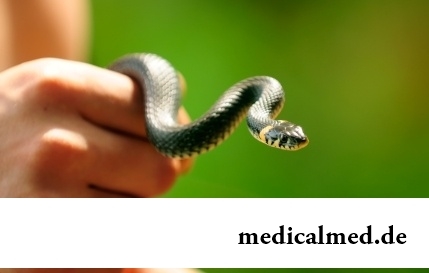
Health and attractiveness - eternal values, pursuing which people often use the most unusual ingredients and technicians...
Section: Articles about health
The main role in development of a peptic ulcer of a stomach and duodenum the bacterium Helikobakter plays pilor. Activity and the strengthened reproduction of this microorganism lead to weakening of protection of mucous membranes and their erosive damage. Manifestations not...
Section: Articles about health
Condition of lips (their morbidity, outward) – one of indicators of health of the person. The peeling, dryness, pallor, and also cracks in corners of a mouth can be not only the cosmetic shortcoming which arose owing to physical damages and weather conditions but also the satellite of some diseases and disturbances in an organism needing treatment. Let's consider 10 possible reasons of emergence of angular cracks (perleches) in corners of a mouth and ways of their elimination....
Section: Articles about health
The body of the person almost for 60% consists of water. It is so important for normal functioning of an organism that loss of all is ponut...
Section: Articles about health
Season of activity of viral infections in the heat. Everyone can get sick, but probability of this unpleasant event it is possible and it is necessary to minimize. There is a number of rules, following to which will help or to avoid absolutely infection with flu or a SARS, or to have an illness...
Section: Articles about health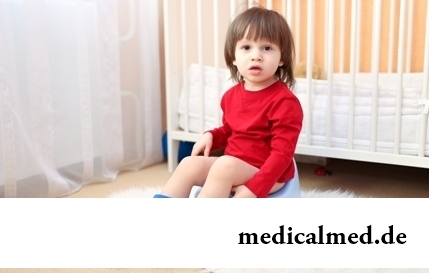
All parents are ready to what the baby often and pisat much. Since then, as the absorbing diapers strongly became current, keeping of the kid in dryness does not represent any problems. But if the grown-up kid continues to urinate in panties, parents begin to feel concern – whether it is normal, or the kid has an urine incontience? Let's try to understand what is enuresis why it arises at children and at what age it is necessary to begin it to treat....
Section: Articles about health
It would seem, about it there can be no disagreements: water is necessary for a human body for normal zhiznedeyatet...
Section: Articles about health
Aspirin (acetylsalicylic acid) – one of those drugs which are known literally to all. It is available in each home first-aid kit, and many accept it at the first signs of an indisposition, often without having a fair idea of properties and a therapeutic eff...
Section: Articles about health
Small appetite at the child – the complaint which pediatricians should hear practically from each mother. Most often it is carried to the category of children's whims, however the refusal of food in certain cases can be to alarming symptoms therefore it cannot be ignored....
Section: Articles about health
"Epilepsy" doctors made the diagnosis in antique times. Displays of an illness and pattern of its development are very well studied. Odes...
Section: Articles about health
The kid who was recently born is surrounded with love of adult family members and their cares without which the baby cannot exist. Some parents consider that gentle attachment and caress are quite enough that the child correctly developed and was happy...
Section: Articles about health
Good appetite was always considered as a sign of good health. The correct operation of the mechanism which is responsible for the need for nutrients and receiving pleasure from process of its satisfaction demonstrates that the organism functions without special deviations. On the other hand, appetite of the person is not a constant. It depends on the culture of food, flavoring addictions imparted since the childhood which can change during life, weather, mood and many д more than once...
Section: Articles about health
Modern footwear is extremely various. It stopped being only protection for legs long ago. Today shoes, boots, barefoot persons in...
Section: Articles about health
An eye of the person daily experiences considerable strain. The problem of preservation of sight is for many years directly connected with a question of supply of tissues of eye enough oxygen and nutrients. This task is carried out by small vessels – capillaries. For holes...
Section: Articles about health
The state of health of the person in many respects depends on food. The organism will well function if during food it receive only useful substances, necessary vitamins and microelements. In this case there will be no problems with digestion, with excess weight, and intellectual and physical activity will remain at the high level....
Section: Articles about health
Summer in the heat. Many are going to spend vacation abroad. Travelers the tender seas, rest on beaches wait, for survey достоп...
Section: Articles about health
Obesity is called a disease of 21 centuries, for the last 100 years the number of the people suffering from excess body weight considerably increased. Statistically, on Earth already about 1,5 billion corpulent people, and 500 million from them have extreme degree of completeness, are negative...
Section: Articles about health
The majority of gynecologic diseases prove three main signs, each of which speaks about need of a visit to the gynecologist. Certainly, it is possible to establish the exact diagnosis only after inspection, but on the basis of some signs it is possible to assume existence of this or that pathology. Let's consider symptoms of the female diseases which are found most often....
Section: Articles about health
Tuberculosis – a serious infectious disease which development is caused by mycobacteria (Koch's bacilli). The illness is known from a deep d...
Section: Articles about health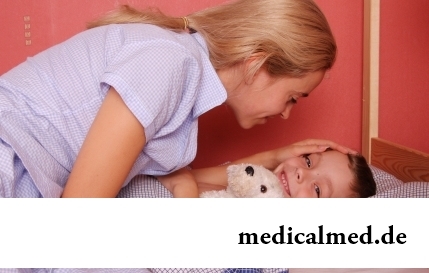
Neurosis is called pathology of a nervous system at which deviations in functioning of the highest nervous processes are observed. Most often - owing to yet not strengthened mentality - children are subject to neurosises. Premises to emergence of such disturbances can become нез...
Section: Articles about health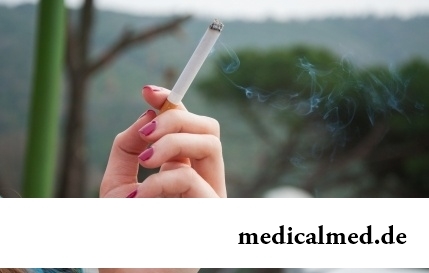
Statistically, in Russia about 34% of citizens smoke. Most of consumers of tobacco has problems with health sooner or later. Not only smokers, but also their relatives suffer. Besides, cigarettes are expensive, and need of their acquisition goes a heavy burden on the budget of thousands of Russian families. Many people dream to refuse harmful tendency, but everyone manages to make it not: nicotine addiction is affectionate and to get rid of it not easy....
Section: Articles about health
More than a half of the married couples which faced prostatitis – leave. The new broadcast "Female View of Prostatitis" will help to learn...
Section: Articles about health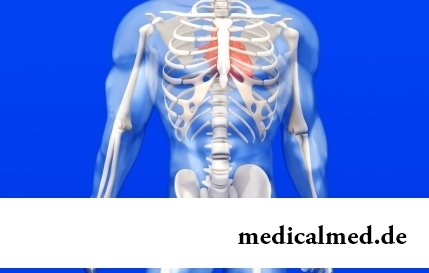
For many women the word "fat" sounds as a sentence. In aspiration to an ideal figure they try to exclude, first of all, from the menu all dishes containing fats without having at the same time a clear idea of a role of these substances in exchange processes, and about an afterbirth...
Section: Articles about health
Separate food - the system of meal based on digestion physiology which is carried to improvement methods. According to nutritionists, the separate use of the carbohydrate and proteinaceous products demanding different conditions of assimilation helps to get rid of diseases of digestive tract and serves as prophylactic from a diabetes mellitus, arthritis, food allergies, cholelithiasis and many other frustration. The essence of salutary effect of a method consists in most Kacha...
Section: Articles about health
The words "disease" and "patient" not without reason come from one root – "pain". As a rule, symptoms of illnesses thoroughly spoil the patient...
Section: Articles about health
Popular joke that there are no healthy people, and is nedoobsledovanny, most of us considers an honest truth, continually it is necessary to hear that all of us are sick hardly from a school bench. It is hard to say, whether so it actually because...
Section: Articles about health
Long time antibiotics were considered as a panacea from all diseases and were appointed even at insignificant symptoms of an infection. Even now not everyone knows in what force of antibiotics how and when they should be accepted. Let's discredit 7 popular myths about such drugs....
Section: Articles about health
